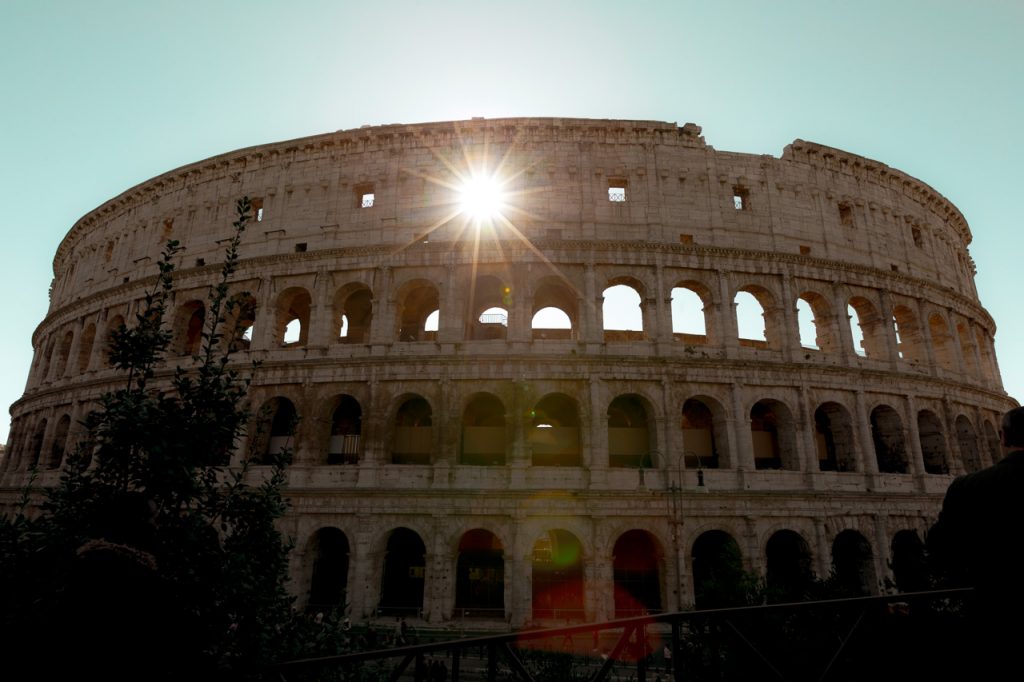Rome is one of those cities that is always a good idea. On a sunny weekend in November we enjoyed ‘la dolce vita’ in the Italian capital. Here we share our favorite places, experiences and restaurants, plus a few tips for hotel and transport.
Written by Mette / Photo by Martin
Translated from Danish
All roads lead to an extended weekend in Rome. That’s how the old saying might have sounded if it had its roots in our friends’ holiday portfolio. Because pretty much everyone we know has visited the Italian capital and speaks of it with unconditional love. Except me.
For me, the road always led to Berlin, where my father was born and raised. I have thus eaten more bratwurst than most; I call my German grandparents Oma and Opa; and I have, with my own hands, cut a stone out of The Berlin Wall when it fell. But I have never visited Rome.
So, when Martin presented me with an extended weekend trip as a birthday present, I felt very lucky. In fact, it has gradually become a tradition that we give each other a city break as a gift. For us, it is ‘la dolce vita’ – an Italian proverb that is perhaps best known as the title of Fellini’s film classic but is also used to express the sweet life. With lots of good food and drinks.
The weekend trip also included a walk with a local guy as a guide. It was cleverly arranged by Martin, who has visited Rome several times over the years through his work. He has therefore seen quite a bit of Rome, but never experienced the mecca of the Roman Empire as a tourist. So, with those glasses on, we both experienced the city for the first time. And now we understand why our friends love to visit Rome!
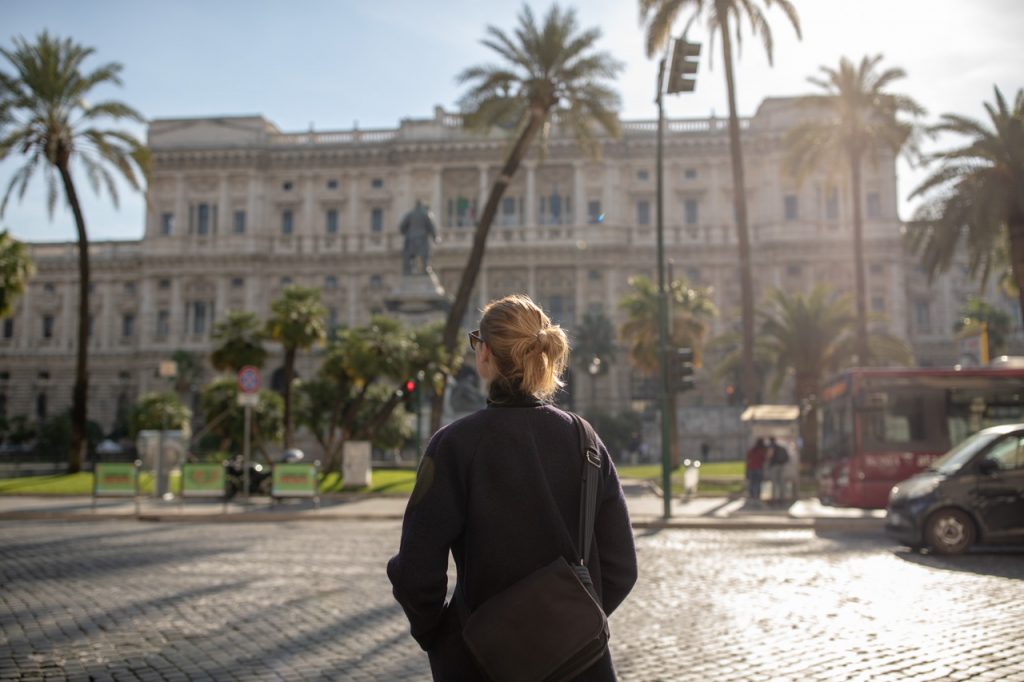
FAMOUS ATTRACTIONS:
OUR 4 FAVORITES
Quickly it becomes apparent that Rome once was one of the greatest empires in world history. The city is a cornucopia of impressive and ancient buildings. You virtually stumble into historical attractions when strolling through the old town. Here, we have selected four of our favorites.
We were amazed by the plus 2.000-year-old temple PANTHEON, which is the city’s best-preserved monument and is free to visit. Entering the massive room with the domed ceiling leaves you with a very humble feeling. When it rains, the water falls directly through the opening in the middle of the dome. Yep, it’s rare to hope for rain when you’re on holiday. But you can’t help it when standing in the Pantheon.
A few minutes from the temple you will find the rectangular baroque square PIAZZA NAVONA, said to be the most beautiful in Rome. The square houses no less than three fountains and is built on top of an old stadium that once could be filled with water – functioning as a pool where the Romans recreated large lake battles. It’s a bit mind-baffling to imagine when you’re standing in the square.
Another classic among Rome’s celebrities is THE SPANISH STAIRS, Piazza di Spagna. The view from the top is worth all the steps. And then of course there is the grandiose fountain, THE TREVI FOUNTAIN, Fontana di Trevi, which according to the Romans is the world’s most famous fountain. If you throw a coin into the water, according to legend, you will be guaranteed a reunion with the city. So, remember the coin – which will be donated to the Red Cross. In short, it’s a win-win.
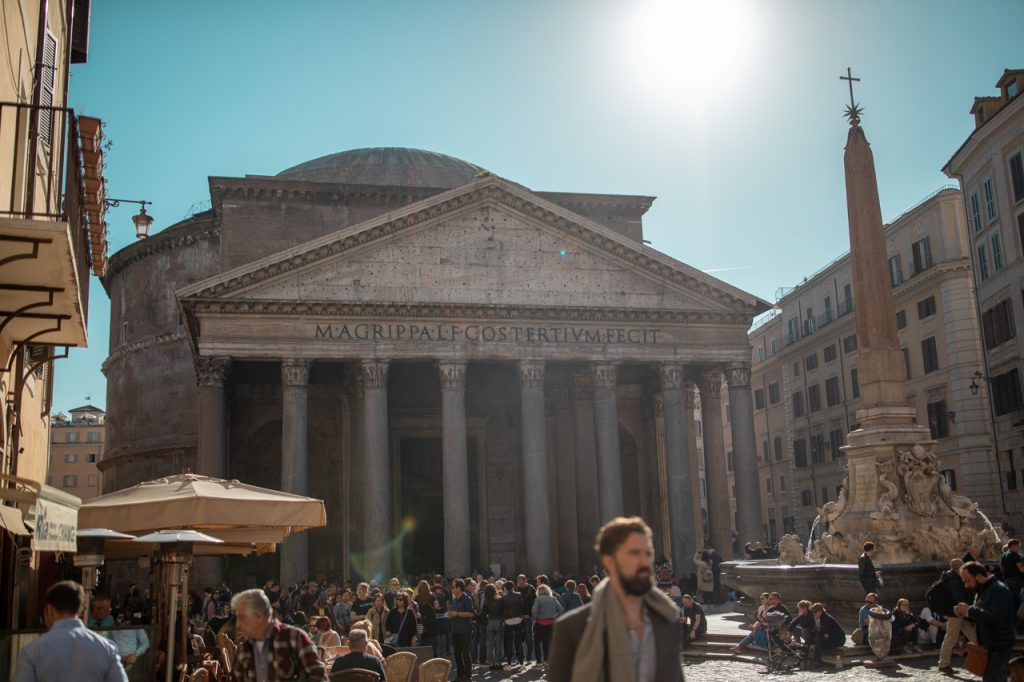
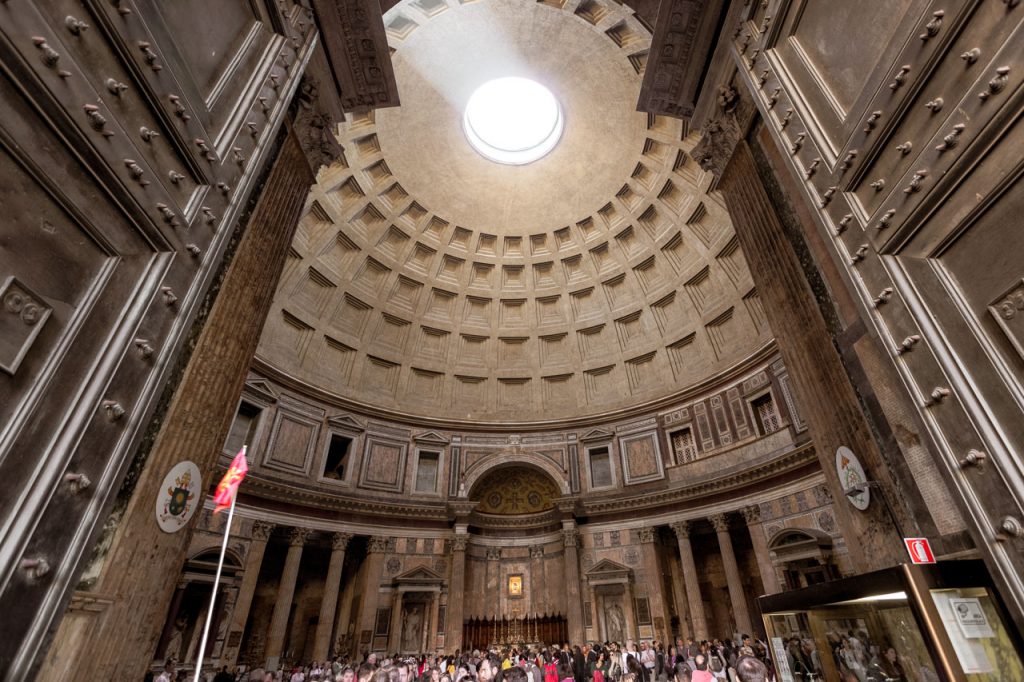
THE GRAND CLASSICS:
COLOSSEUM & THE VATICAN
Over 10 million tourists visit Rome every year, and it feels a bit like everyone is visiting the Colosseum and the Vatican. If you have the two sights on your list, it is an advantage if you come prepared.
How to skip the que
Plan your visit early or late in the day, when the number of tourists is less massive. In addition, you should decide whether you want to see the places on your own or buy a guided tour. A guided tour is, of course, more expensive than a regular entrance ticket, but in return, you avoid spending hours in a queue.
You can either book tickets from home or buy them from one of the many street vendors who swarm around the tourists and entice them with the words “Skip the line”. Get good tips for the various entrance options for the Colosseum HERE and the Vatican HERE.
Free entrance
To the surprise of many, visiting the Vatican neither costs money nor requires a passport. You can stroll directly from the streets of Rome into St. Peter’s Square, which is also known as the waiting room for Paradise. It is also free to visit Peter’s church, where you can climb all the way to the top of the dome and get a superb view of Rome.
When visiting the dome
The visit requires a little patience, as the queue is often one or several hours long. If you want to visit the dome, you must go left in the vestibule, follow ‘Scala Regia’, and choose whether you want to take the lift or the 537 steps to the top. The church is open from 7-18, and visitors in short dresses and shorts will not be admitted. So, remember to dress for the occasion.
Meet the Pope
Are you in Rome on a Wednesday at 10 am or Sunday at 12-noon, you also can wave to the Pope, who is currently called Frans. Here he reveals himself to the many pilgrims and tourists who have turned up at St. Peter’s Basilica. Please check some practical tips HERE.
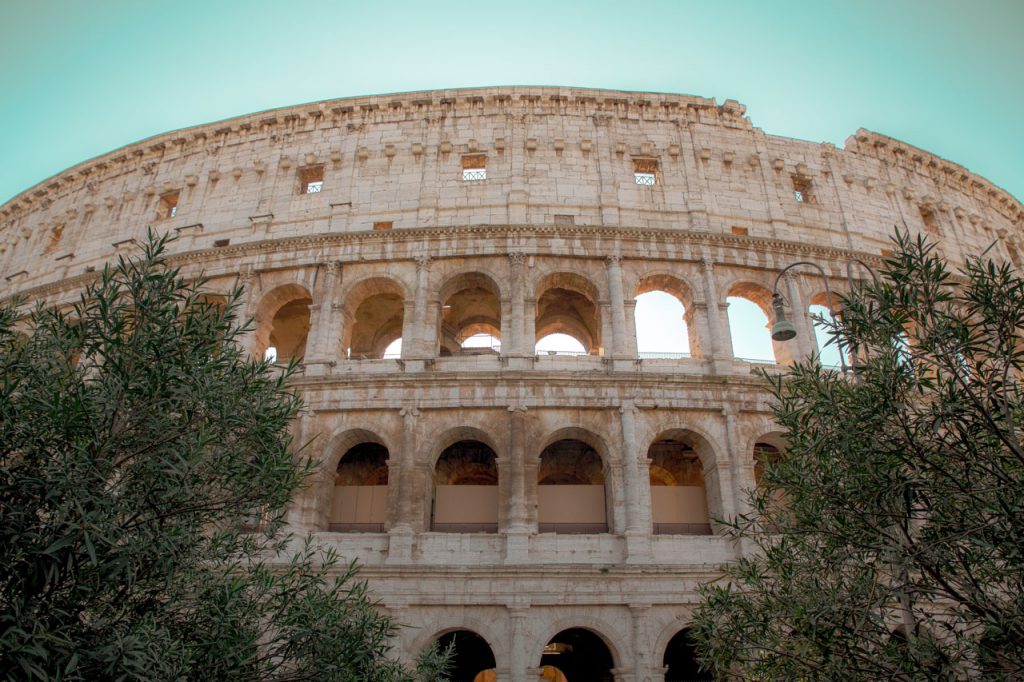
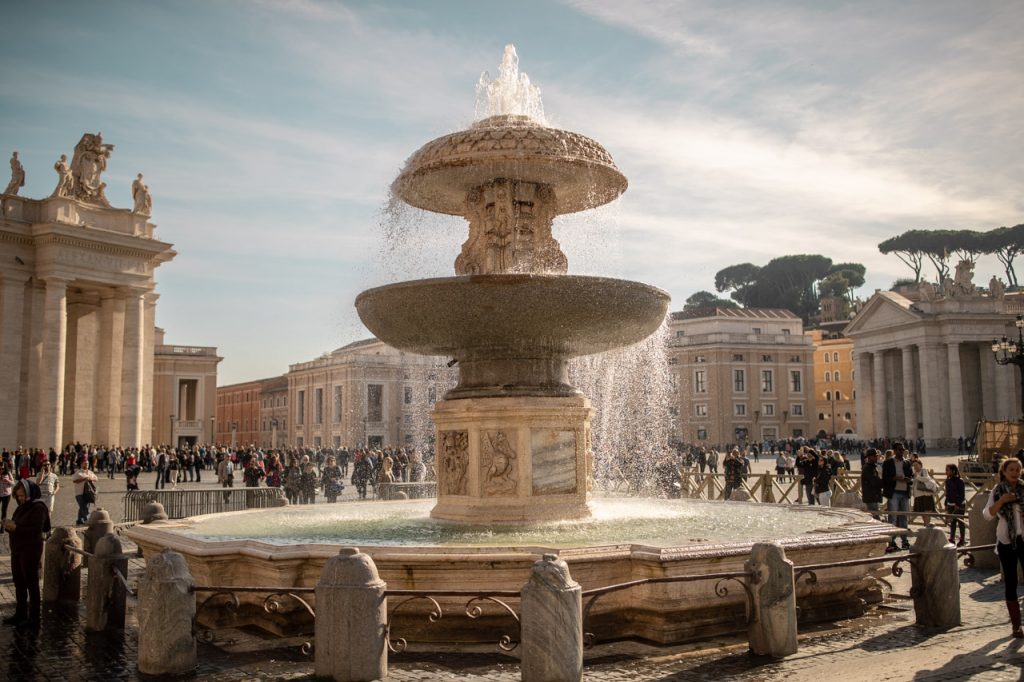
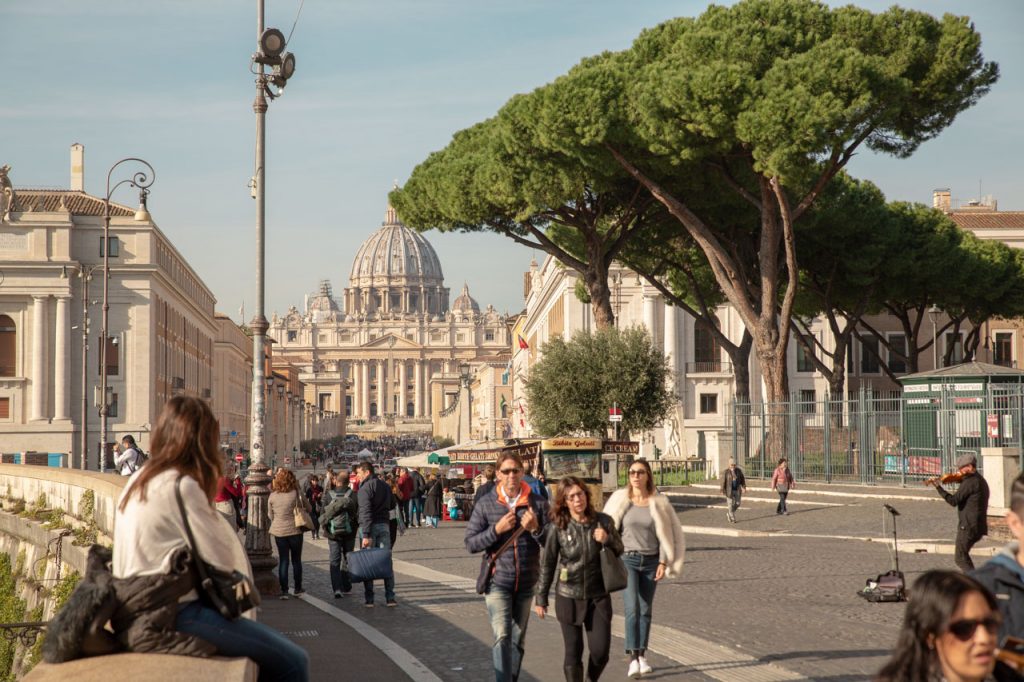
WHAT WE LOVE THE MOST:
EXPERIENCE ROME ON FOOT
You can stroll around most of the old town on a weekend. But it is impossible to tick off all the city’s famous sights. Rather, pick a handful and visit them early or late in the day when there are fewer tourists. And spend the rest of the day experiencing life in Rome’s old streets. Here is where we loved to stroll around.
Discover the real Rome
Our favorite experience was VOLUNTARILY GETTING LOST. No matter which way we went, we fell head over heels. The atmosphere, the aesthetics, and the historic buzz. The narrow, cobbled streets, and charming squares. The small sidewalk cafes, pompous churches, and patinated houses covered in green plants, and painted in pastel colors – all connected via thin robes carrying laundry of the day. If you dream of experiencing the city through the eyes of a Roman, while getting the best insider tips, we can recommend hiring a local as a guide through the website ‘With locals’.
Our favorite district
We always got the same answer when we asked others which district, they liked the best: TRASTEVERE. We are now big fans too. The old workers’ quarter is a picturesque labyrinth of small streets that exudes an Italian village atmosphere and houses some of the city’s best eateries. The neighborhood unfolds on either side of the pleasant pedestrian street, Via della Lungaretta, and around Trastevere’s fountain in Piazza de Santa Maria.
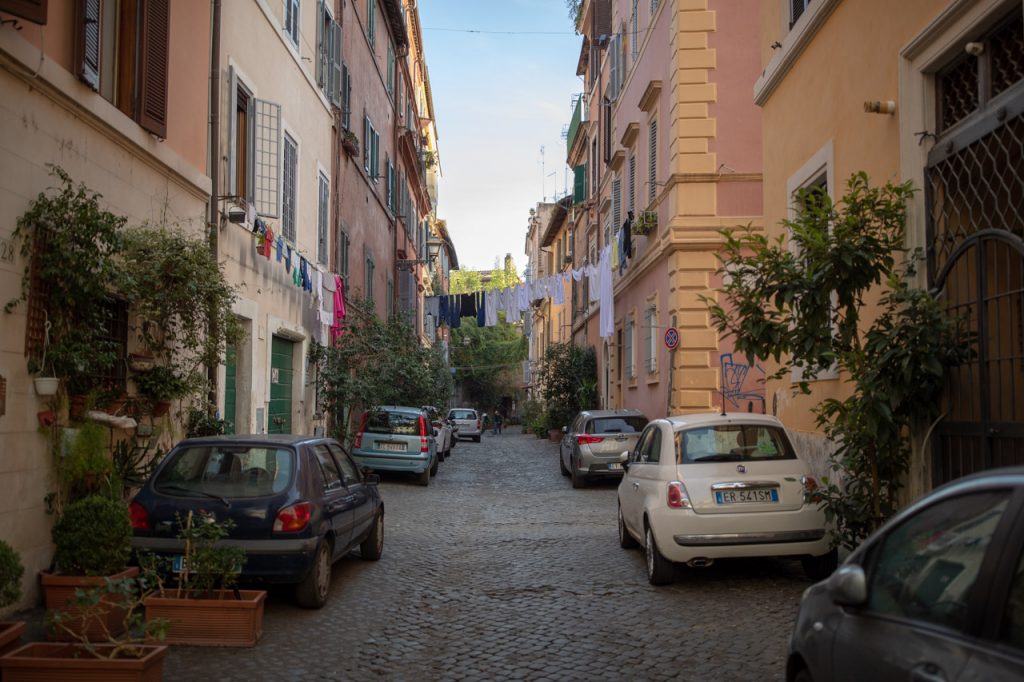
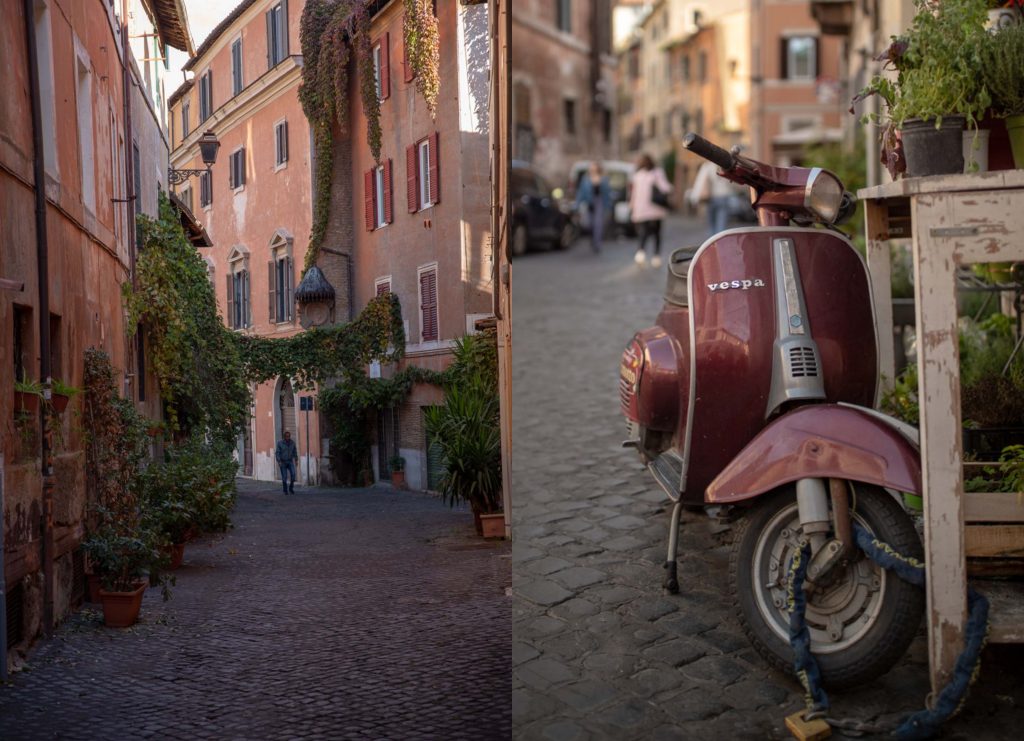
The locals’ favorite district
However, Trastevere is no secret among tourists. If you are curious to find more authentic surroundings, we’ve been recommended another district: Rome’s old butcher’s quarter TESTACCIO. It is located on an artificial hill, Monte Testaccio, created by the accumulation of old potsherds over several hundred years. Unfortunately, we didn’t have time to visit ourselves, but the district is supposed to be super charming. A favorite area among locals, and supposedly a bit of an overlooked honeypot for foodies.
The most famous district
The main attraction is, of course, the city’s beautiful, old center, CENTRO STORICO, where you will find all the most famous landmarks, monuments, and squares. It’s a must-see. The district is centered around Piazza Navona and the Pantheon. It borders the Tiber and the Vatican to the west, the Spanish Steps and the Villa Borghese park to the north, and the Colosseum and Forum to the southeast.
Best views of the city
No matter where we are in the world, we love visiting places that offer top-shelf views. In Rome, the top of the DOME OF PETER’S CHURCH is undoubtedly the most famous. Next comes the tower at ENGELSBORG and the top of THE SPANISH STAIRS. But there are several places in the city that are also worth visiting. Especially if you want to escape the tourists for a while. Rome is founded on seven hills, from where you can experience several great and peaceful views of the city.
Unfortunately, we only made it past a handful of viewpoints, but if you are in Trastevere, we can recommend taking the trip up to GIANICOLO and past the Dell’Acqua Paola fountain. On the other side of the Tiber, you will find AVENTINO and the small park GIARDINO DEGLI ARANCI, which also has a beautiful avenue of fragrant pine trees. And at the Villa Borghese Park, you will find the PINCIO HILL, from where you can look out over the people’s square, Piazza del Popolo, and St. Peter’s Basilica, which according to rumor is one of the city’s most beautiful views. All the places can be easily reached on foot.
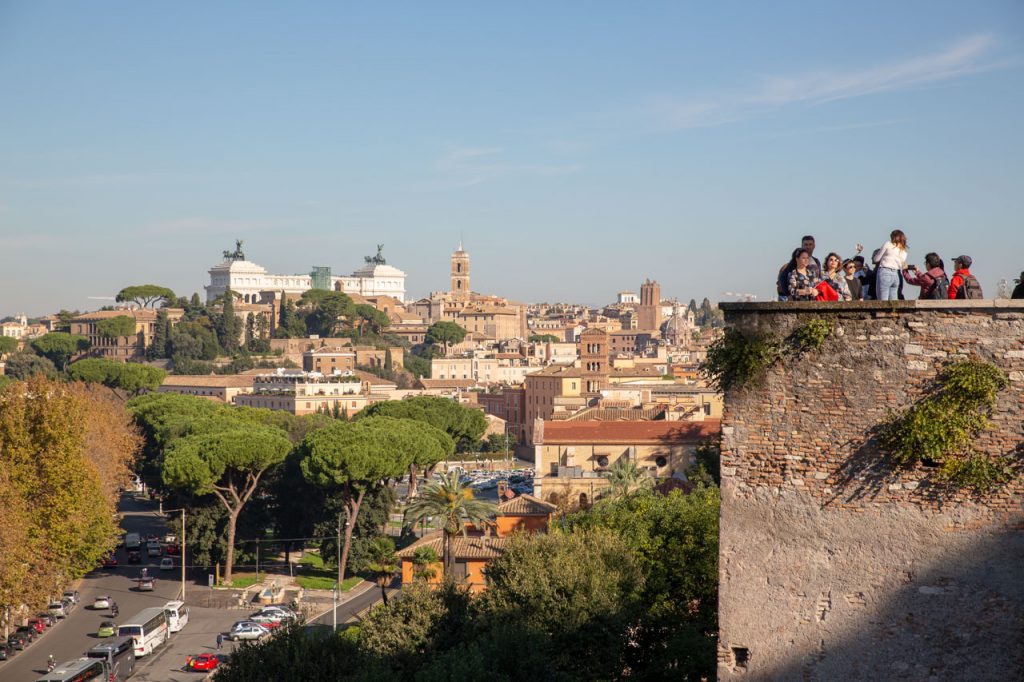
Beautiful piazzas – with drinking water and delicacies
There are said to be more than 900 churches in Rome – and all are located facing a square, also called a piazza in Italian. It is therefore not so strange if you get the feeling that all roads in Rome lead to … a square! And preferably with a fountain in the middle, or a so-called Fontanelle.
A FONTANELLE is approx. 1 meter in height and made of cast iron pillars, from which fresh water from the mountains trickles around the clock. The locals showed us how to place your finger on the spigot and turn off the water jet (see a picture of Mette using the Fontanelle here). Then a thin, fine water jet sprays from a small hole on the cock’s neck at a comfortable drinking height. We used it several times with no subsequent issues.
The city’s most famous square is PIAZZA NAVONA, which lies like an oblong blob of butter in the old center and is referred to as the entire city’s living room. But one of the coziest squares is CAMPO DEI FIORI, which is the city’s old flower square. The square was less pleasant a few hundred years ago when it served as an execution ground. Today, the square is a lively hotspot with lots of small market stalls, restaurants, and delicatessens, where you can buy Italian delicacies to take home. Rumour has it that Ruggeri is the best store. They are also happy to vacuum pack your purchases for the journey home if you ask for it, per favore.
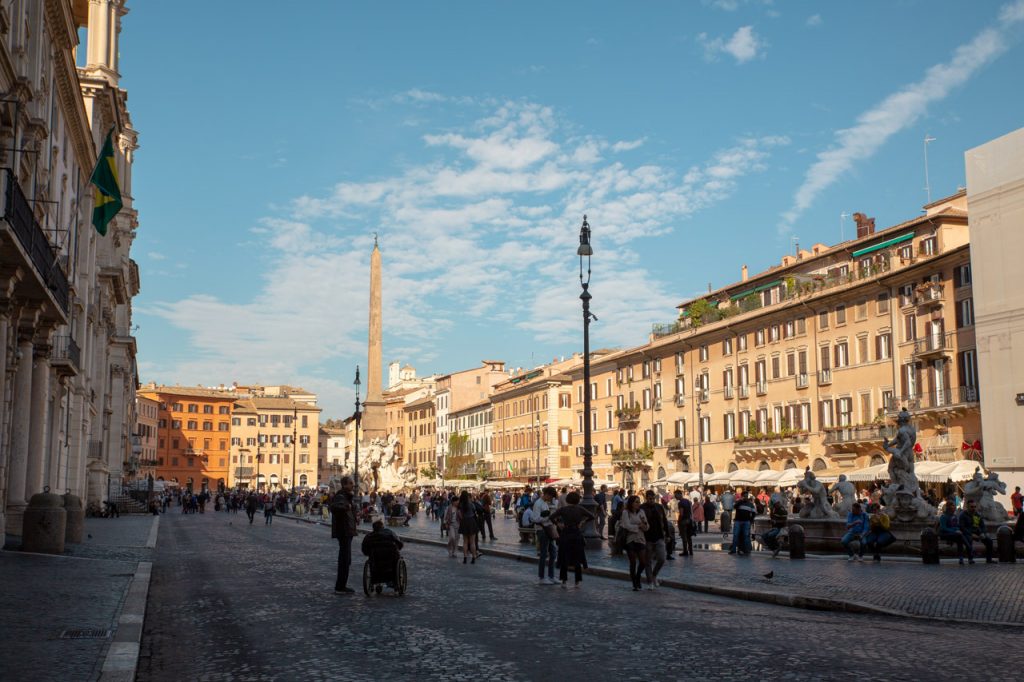
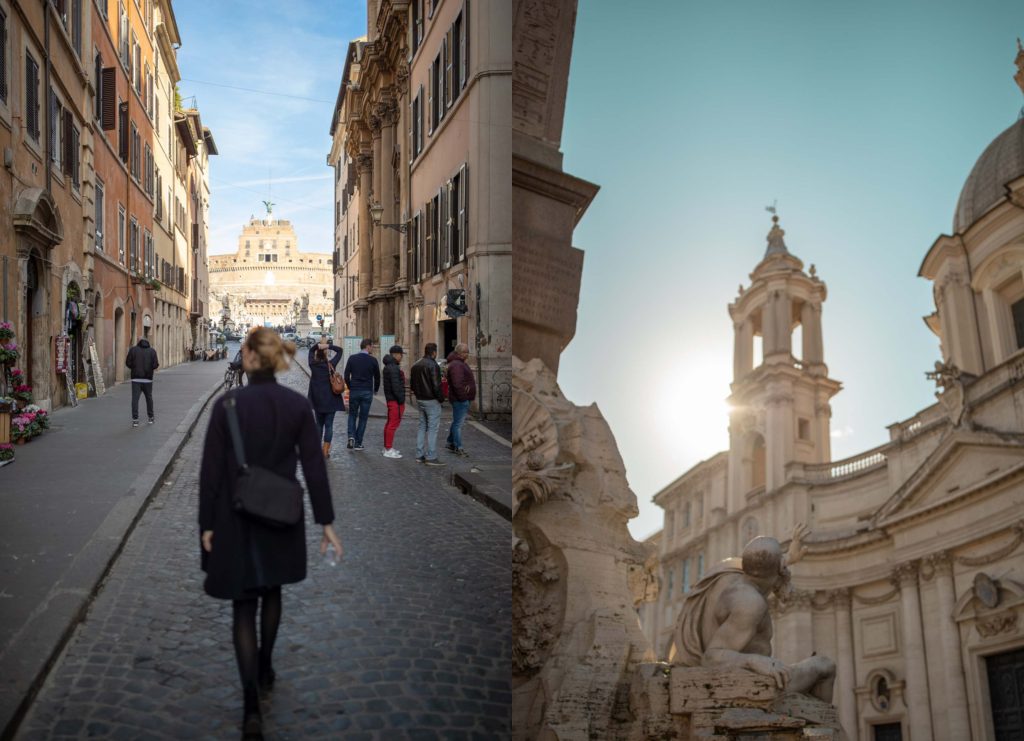
The river bridges and the black sun
Paris has the Seine. Rome has the Tiber. Italy’s third-longest river originates east of Florence and meanders through Rome, where ancient bridges connect the banks. We thought that the most beautiful bridge is PONTE SANT’ANGELO at Engelsborg. The car-free bridge is adorned with baroque angel statues and a view of two other antique bridges, whose reflections light up in the river water on a sunny day, while the backdrop is the Castle of Angels and a view of St. Peter’s Basilica.
According to the Romans themselves, the most beautiful bridge is PONTE SISTO, which connects the old center and Trastevere. If you visit Rome in autumn, this is also where you can experience the natural phenomenon of black sun. The sky is covered with thousands of starlings who, at dusk, perform a flying dance performance before settling down to rest in the trees along the river. It’s a fascinating sight, but not so much fun running headfirst in the rain of bird droppings. Good tip: bring an umbrella!
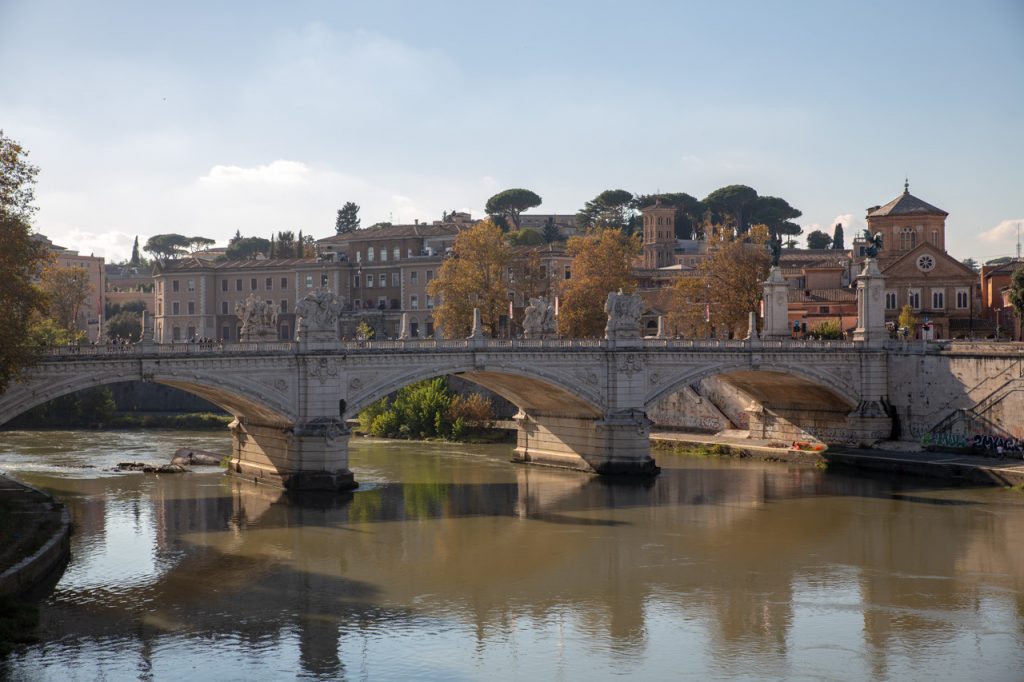
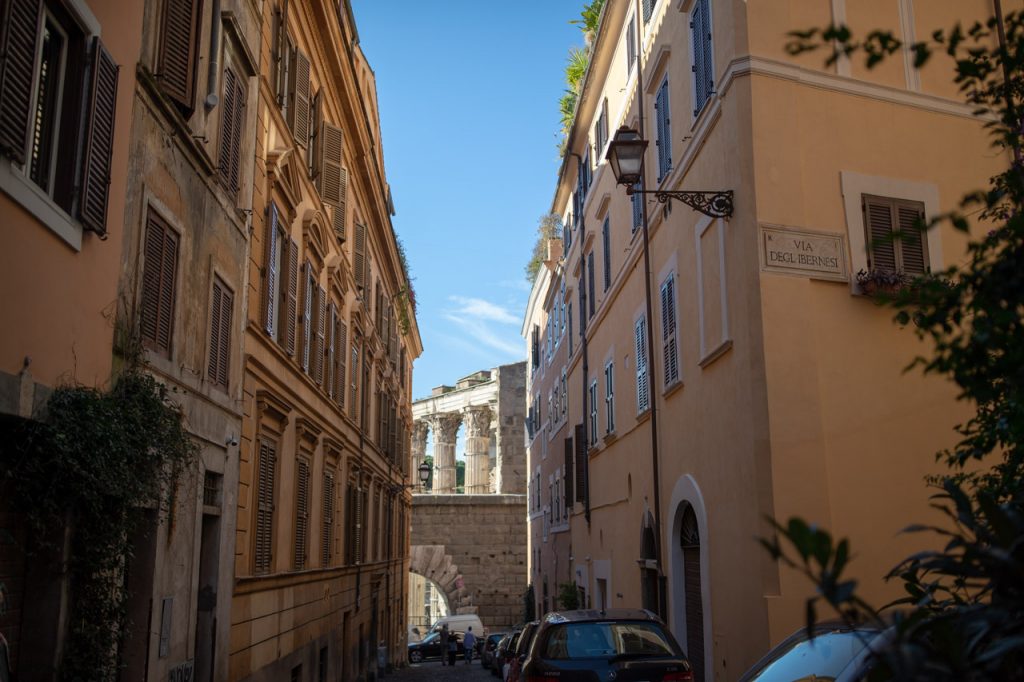
EAT YOUR WAY THROUGH ROME:
FOOD AND DRINKS
Choosing where to eat in Rome is as impossible as asking the Price Brothers (two famous Danish chefs) to use less butter. In other words, the abundance of great places to eat is close to never-ending. Therefore, here are a few overall tips on how to find a good restaurant.
Do as the Romans
Trying to Google “best place to eat in Rome” and getting 150 million hits, makes it a difficult to narrow down a handful of places to visit. Paralyzed by Google’s infinite number of suggestions, it seemed more obvious for us to ask the locals for advice. Independently of each other, they always gave us the same advice: “Just avoid the restaurants around large squares and tourist attractions. Go look for the small, simple eateries hidden in the alleys.” And as impossible it seemed to choose where to eat; just as impossible, it seemed to have a bad dining experience. We dined at everything from small simpel pavement cafés to restaurants packed with tourists – and the food always tasted ‘fantastico’.
The local’s favorit
In addition, when we asked for an authentic italian place to eat in Trastevere, the the arrow pointed to the same trattoria: DA AUGUSTO. The restaurant is a small and rustically decorated eatery, where the wooden tables are close together and the food is as unpretentious as the surroundings. Oh, mamma mia, it tasted good! The menu consists of traditional dishes with great love for seasonal ingredients. Payment must be made in cash, and the waiter writes your bill directly on the paper tablecloth. Open for lunch at 12.30-15.00 and evening at 20-23. Address: Piazza de’ Renzi 15, Trastevere.
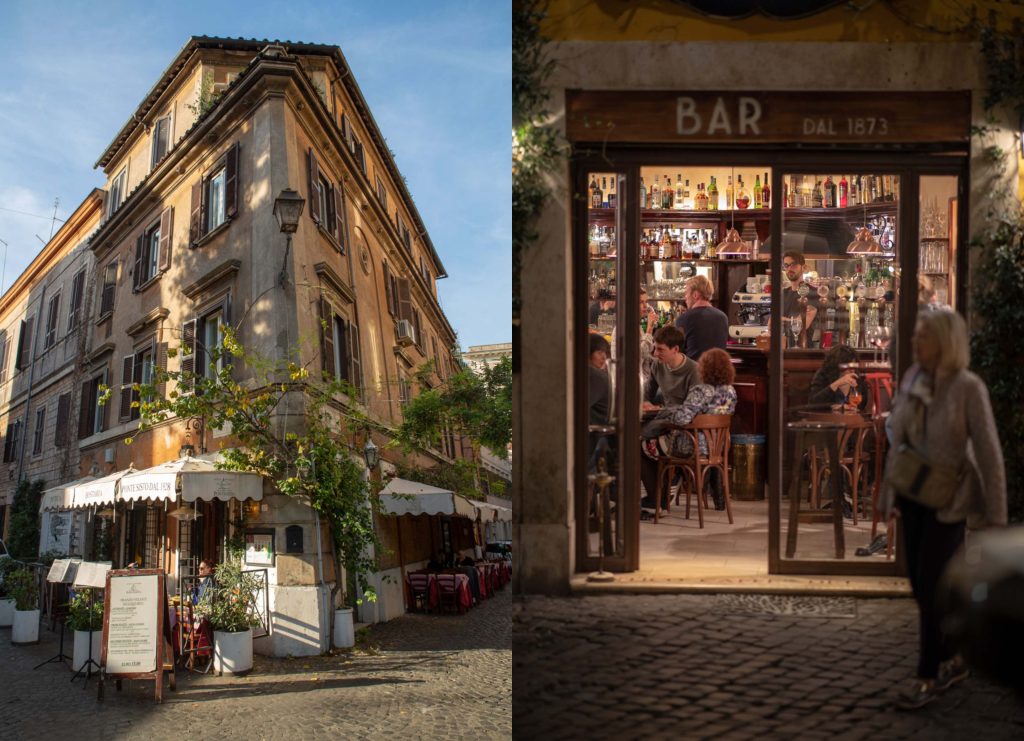
Eat at a Trattoria
Everywhere in Rome, you will see places to eat with signs saying that this is a TRATTORIA or OSTERIA. Originally, there was a difference between the two in terms of whether wine was served or not. Today, they both denote an Italian eatery that is less formal than a ‘ristorante’. This means that the level of service is slightly below a restaurant and the atmosphere is more relaxed. Often you cannot book a table, as the concept is that the guests just swing by and eat a round of dinner. Short and sweet. We are fans!
Enjoy an aperitivo
If you are a little hungry in the late afternoon, we can recommend that you look for places to eat that offer APERITIVO. A dining tradition that is also known as the Italians’ answer to ‘happy hour’. But it is actually more than that. Because here you also get finger snacks with your drink. They are either served together with your drinks, or you pick them up yourself at the bar, where there is a small buffet with e.g. bruschetta, cheeses, chips, pies, and olives. Aperitivo is preferably served between 6-8 pm, and although the food can easily satisfy your hunger (been there, done that!), it is not intended that you should eat your max before the evening’s dinner. Read more about the aperitivo HERE.
How to order a coffee like a local
Italy is a mecca for us mocha lovers! The country where the espresso machine was invented in 1884. Here, a cup of coffee costs half as much as in Denmark, and regardless of where we took a coffee break, it tasted great. If it is your first time visiting Italy, it is especially nice to know two things: 1.) The coffee is cheaper if you drink it standing at the bar, and 2.) if you order a ‘latte’, you get a glass of milk. In Italy you have to say ‘caffé con latte’. Get more tips on how to order a coffee in Rome HERE.
The two most famous coffee bars
If you want to experience the real Italian coffee culture, you should visit the city’s two finest coffee establishments. SANT’EUSTACHIO IL CAFFÉ and LA TAZZA D’ORO. Both are located a few steps from the ancient Pantheon temple. Apart from the fact that it feels like stepping into a time warp of coffee history, both coffee shops are among the country’s most famous. Coffee enthusiasts like to bounce from one bar to another to find their favourite.
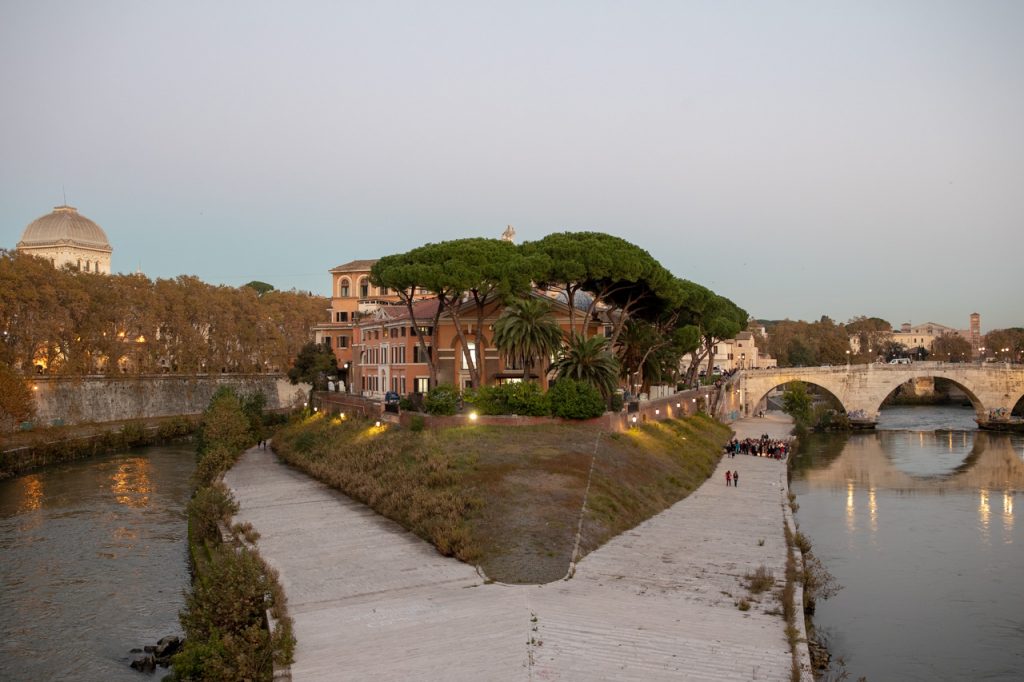
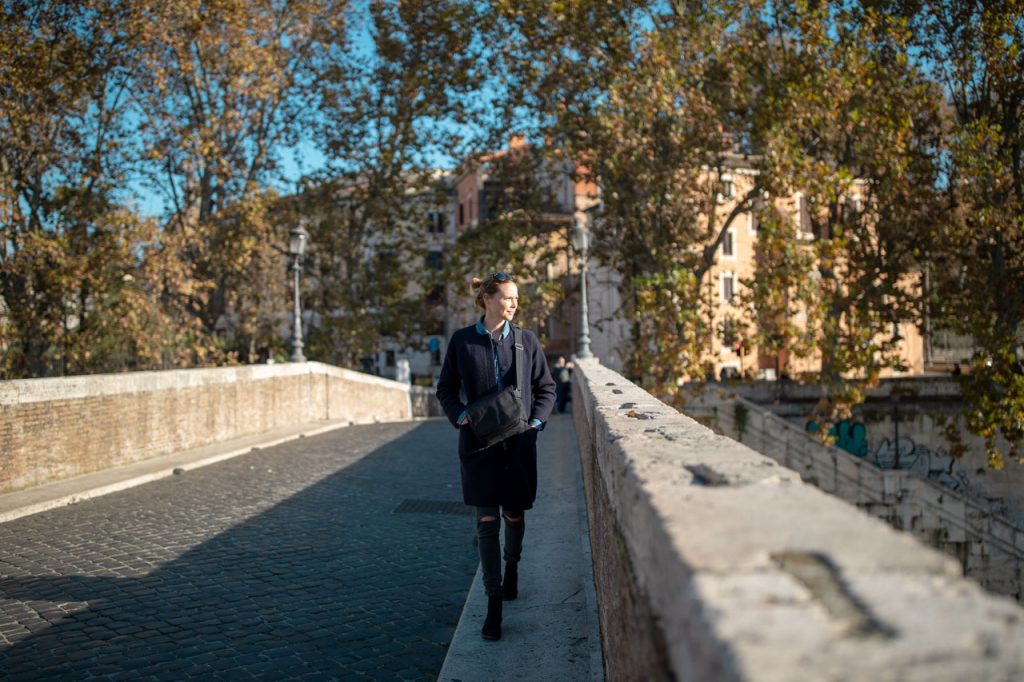
HOTEL & TRANSPORT
Where we stayed in Rome
Based on a combination of budget, location and a free night saved on Hotels.com, we booked a room at the newer boutique hotel MONTE CENCI. The rooms are classically and elegantly furnished, and the hotel offers a wonderful breakfast (incl. freshly made espresso, cappuccino, etc.) and a cozy roof terrace, from which you can enjoy the view over the city’s rooftops.
Monte Cenci is centrally, but peacefully located between the Jewish quarter (Rione Sant’Angelo) and the Tiber. For us it was a perfect location. We could easily walk to the most famous historical attractions and in the evening stroll over the bridge at Tiber Island and 10 minutes later be in the heart of Trastevere, which is full of cozy streets with small shops, eateries, and wine bars.
Transportation from/to the airport
Are you arriving at Leonardo da Vinci airport – also called Fiumicino (FCO), located approx. 30 km west of the center – there are several ways to get into the city. Public transport is the cheapest and mainly runs directly to Rome’s main railway station, Termini.
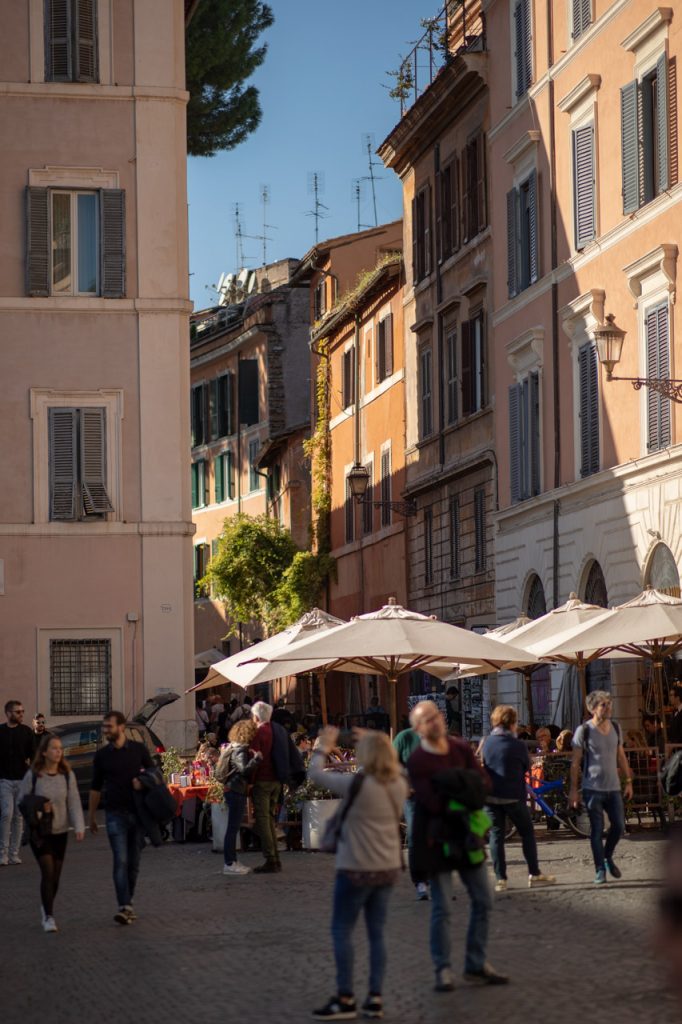
Bus
The cheapest is to take one of the many buses that run to the main railway station Termini. Alternatively, you can take a shuttle bus, e.g. Sit Bus Shuttle, which runs approx. every half hour, takes approx. 45 minutes and costs 6 Euro. You can buy tickets at the terminal or online.
Train
If you want to get into the city a little faster, you can take the express train Leonardo Express, which runs directly to Termini station in 30 minutes and costs 14 Euros. The train departs every 15-30 minutes.
Or you can take the REGIONAL TRAIN Express FL1, which has eight stops on the way to Termini station. The trip costs 8 Euros. It runs a little slower than the express train but may be perfect for you if you live in other parts of the city that are a little outside the center. Get more info HERE.
Taxi
If you prefer to jump directly into a taxi, it is recommended to take one of the authorized taxis. They are white and have taxi meters. Roman taxi drivers are notorious for tricking tourists. Especially with the trips from the airport. It is good to know that there is a fixed rate of 48 Euros from the airport to the center. The trip takes approx. 45 minutes, and you don’t have to pay extra for luggage – no matter what they might say.
Minibus
We chose a middle ground in terms of price: We took a minibus via one of the many private companies that you will no doubt meet on your way out of the airport. Their sellers are very forthcoming, but to us, it seemed like the optimal solution. The bus had room for 8 passengers, all of whom were driven directly to their hotel. It cost 35 euros for two people and takes 45-60 min in rush hour traffic, and 30 minutes in light traffic.
We drove with the company Concora. You can either buy a ticket via their desk at the airport or book via the contact information on their website. One day before at the latest. It worked flawlessly, and the driver picked us up right in front of the hotel when we had to leave.
